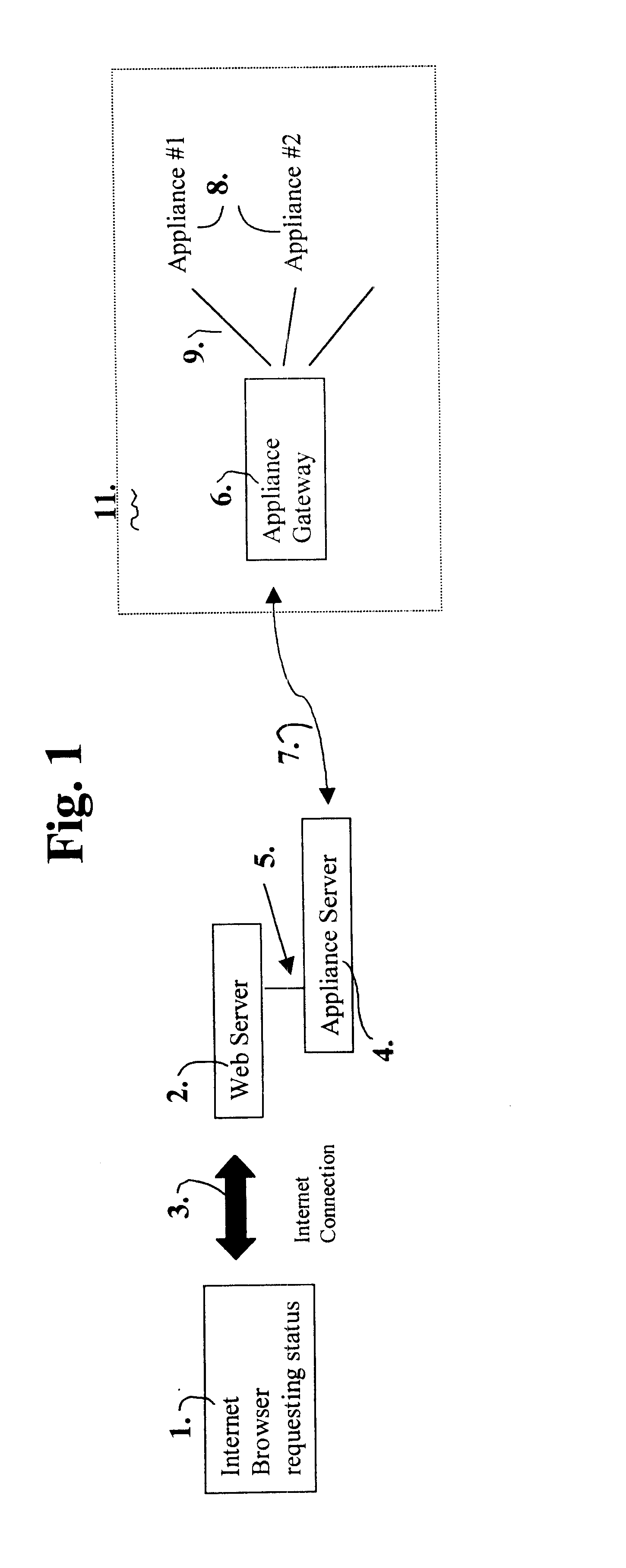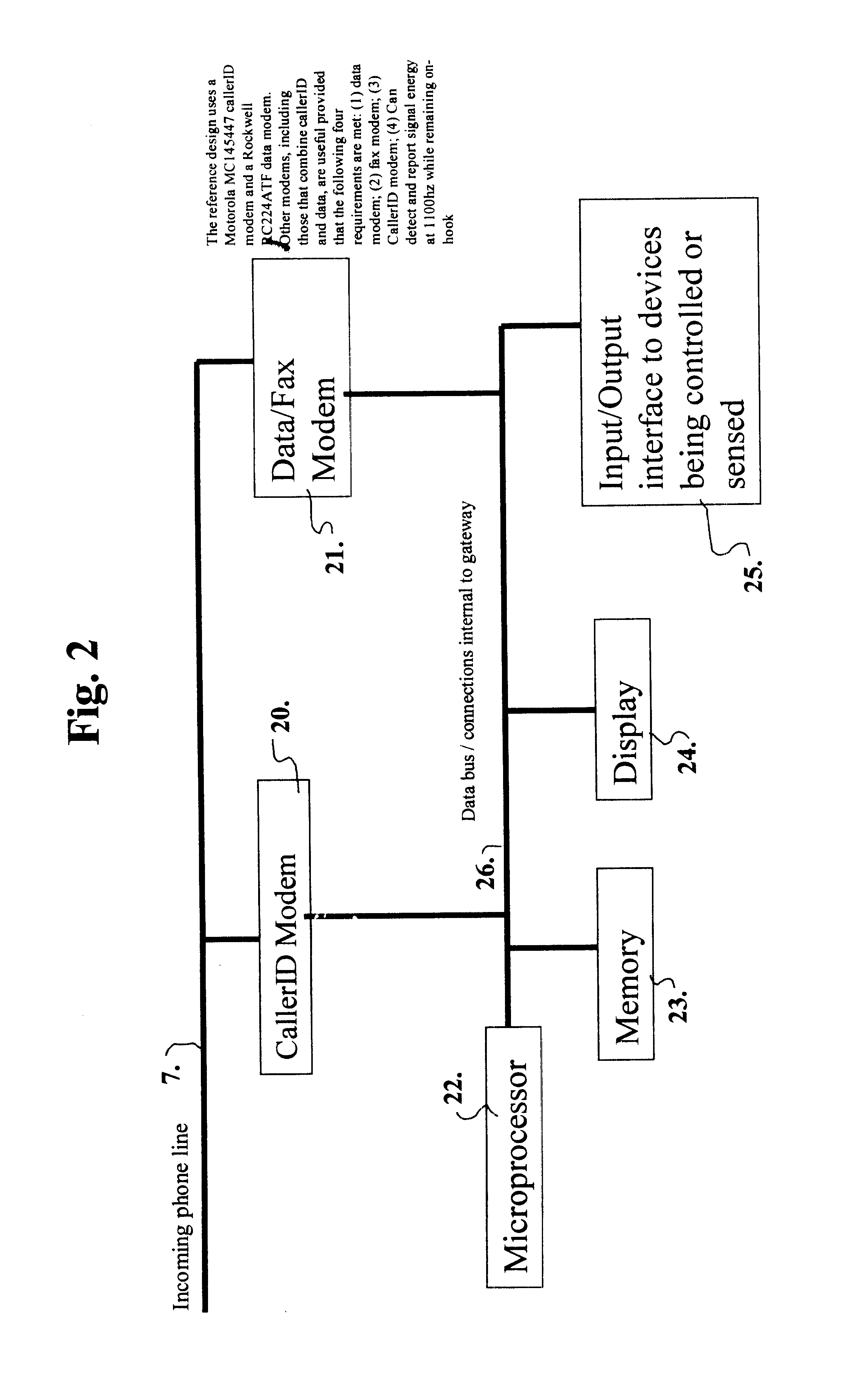Dedicated lines have been used in a variety of systems, however the cost and complexity of dedicated lines becomes quickly prohibitive as a
system increases in size.
As to other means, such as radio, appropriate identification and coding may be available to establish connections among many components, however radio suffers from attenuation over long distances, and significant frequency, bandwith, and
repeater limitations.
While these solutions are technically feasible, they are not cost effective when the remote device is very inexpensive, such as in residential housing, where the device might be a $10
smoke detector or inexpensive lighting controller.
Uniquely addressing individual components of a
system becomes more difficult for users geographically removed from the
system they control, particularly if the user wishes to move the means for control, the Host, outside the commonly-controlled portions of the system or network (for instance, outside a "
Local Area Network" or LAN), or if the user simply wishes an alternative to first accessing another controller, sub-controller, or gateway computer or modem within the controlled system in order to gather data or
control equipment.
As the distance over which a user may wish to gather data or
control equipment increases, so does the "problem" of addressing individual components within the controlled network increase, as it is not cost effective for each device to have its own dedicated phone line or radio
transponder.
Any one of these other devices might also answer an incoming call and foil the
data connection intended by the user as he queries the remote location for information, or as he attempts to control the remote device.
The problem is perhaps most acute when attempting to gather information from remote devices, or when attempting to control such devices, through the largest network yet developed, i.e., the global
computer network, or "internet."
A user may remain connected to
the internet as a whole through digital subscriber telephone lines (DSL) and by other means, however a user cannot, with technology existing today, remain connected to individual appliances and devices to uniquely address each such device, that is, maintain a "persistent connection" to individual devices.
A user cannot gather the desired data or issue the device-specific control command, unless the user first establishes a connection with that device.
However, when the decision to initiate a connection originates at the Host, the problem can be more complex, in part because the
signal initiated by the Host must be directed to, and received by, an individual device or appliance.
This problem is encountered regardless of the architecture of the system or network, the means used to communicate, the instructions issued, or the protocol.
Thus, the problem of establishing an appropriate connection is common to all control systems, and to data gathering initiated by the Host or user.
While the inventions disclosed in these prior patents fulfill their respective objectives, these prior patents do not describe or suggest a method or system which does not utilize coded-
ringing schemes to communicate, or initiate a connection between a user or Host and an appliance or other controlled device, wherein only the device selected by the user or Host responds to the initiating
signal from the Host.
These prior coded-
ringing methods of the prior art are slow, as they require time merely to perform rings sufficient to impart significant information to accomplish a task and, largely because of such slowness, these methods are limited in the kinds of information which may be transmitted, and the tasks which may be performed.
Further, the prior art is error prone, as there is generally no acknowledgment from a controlled device, and errors in signaling result where voice mail and
call forwarding are on the same line.
Finally, no prior inventions disclose any system of control which utilizes known and commonly available telephone caller
identification technology.
 Login to View More
Login to View More  Login to View More
Login to View More 


